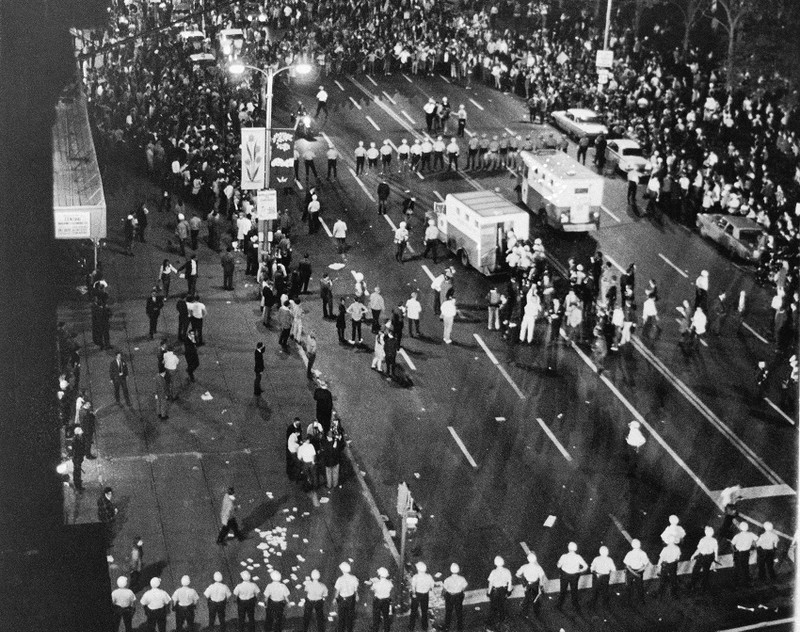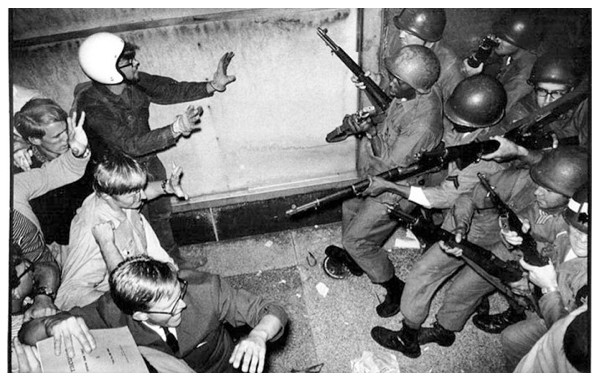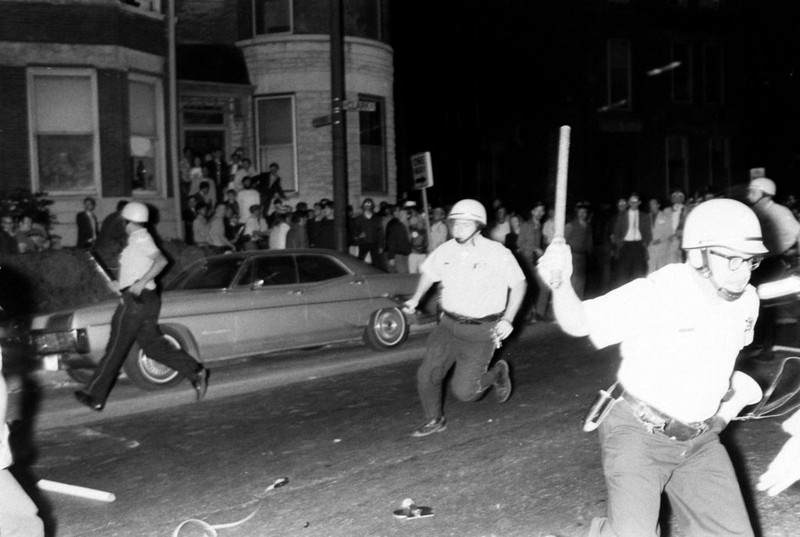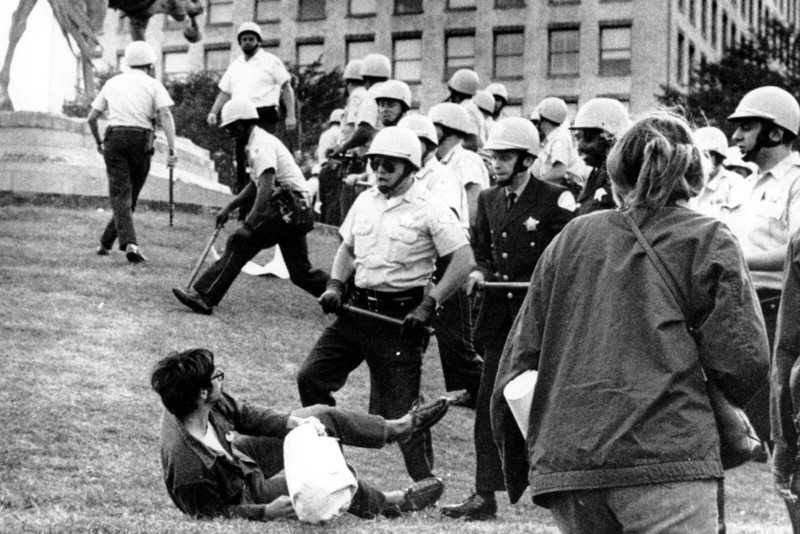Battle of Michigan Avenue
Introduction
Text-to-speech Audio
The climax of the violence engendered by the anti-war protests at the 1968 DNC happened in 18 minutes on the evening of August 28 and is known as the “Battle of Michigan Avenue.” Some 10,000 people had gathered in Chicago to protest the Vietnam War and the nomination of Hubert H. Humphrey as the Democratic candidate for president. Disillusioned by continued support of the war in Vietnam, and enraged by the recent assassinations of Martin Luther King and Robert Kennedy, and the lack of progress in civil rights, these protesters came to Chicago to try to make a difference. As host of the convention, Mayor Daley had amassed a huge law enforcement presence, over 20,000 combined police, National Guard and Army to ensure there would be no trouble or disturbance to the convention. For several days now, there had been sporadic clashes between police and protesters. Tensions and emotions grew as the convention moved toward the defining moment of nominating Humphrey on the evening of the 28th. When some 5,000 protesters moved from Grant Park onto Michigan Avenue toward the Hilton hotel, where most of the delegates were staying, all that was needed was a spark. And the police provided it by charging and indiscriminatingly clubbing, beating and using tear gas against the crowd, which was made up of not only demonstrators, but also journalists and innocent bystanders. Forever captured on film, police exhibited gratuitous and malicious brutality, in what would become officially declared as a “police riot.” Injuries were suffered by over 500 protesters, 100 innocent civilians and 150 police officers.
Images
Battle of Michigan Avenue – August 28 1968

National Guard Confronting Protesters

Police running amok on Michigan Ave

Police Attacking Protester

Backstory and Context
Text-to-speech Audio
The “Battle of Michigan Avenue” took place on the third day of the Democratic National Convention when the delegates were nominating Hubert Humphrey as their candidate for president.
Tensions had been building for many days. There had been verbal and physical skirmishes between the police and the primarily young people who had come to protest the Vietnam War and the established power structure in the United States. While most of the protesters were peaceful, there were some radicals with an agenda to disrupt the convention and to instigate unrest. Some protesters tried to incite the police presence with foul language, the taking down of official American flags or the raising up of Vietcong flags. There were also instances, especially after the police had begun their repressive tactics, where some protesters threw bottles, bricks and urine and feces at the police.
The situation was a powder keg. In general, the protesters despised the police, seeing them as the symbol for a repressive and corrupt United States. In return, the police hated the protestors and the counterculture they represented, thinking them dirty, entitled, ungrateful and unpatriotic.
Add to this mixture, the incendiary guidance of Mayor Daley and the leaders of the police, and there’s little wonder things exploded on Michigan Avenue. Mayor Daley, burned by the violent summer racial riots in Chicago, was hell bent on not allowing the protesters any say or leeway. His recent advice to police on handling rioters was to shoot to kill or maim the next time they encountered looters or arsonists.
“The whole world is watching,” chanted the protesters on Michigan Avenue after the police had charged and violently attacked the crowd. But did it change anything?
The Chicago DNC riots did not end the war in Vietnam. Polarization between establishment and the counterculture continued to grow. But the events of Chicago did gain many more adherents to the anti-war movement, and to the belief that something was inherently wrong with the existing American power structure. It also showed that people could stand up, protest and seek to change the direction of the country.
Sources
1968 Chicago Riots. Economist. August 31st, 1968.
Jones, Julius L.. The Whole World Is Watfching, Chicago History Museum. Accessed October, 2022. https://www.chicagohistory.org/chicago1968.
Frankel, Max, Special Introduction, Rights in Conflict, The Violent Confrontation of Demonstrators and Police in the Parks and Streets of Chicago During the Week of the Democratic National Convention of 1968, Report by David Walker to the National Commission on the Causes and Prevention of Violence, Bantam Books, 1968
Sealock, Miriam. The Use and Abuse of Police Power in America: Historical Milestones and Current Controversies. Chicago Police During the 1968 Democratic National Convention. ABC - Clio , 2017.
https://unireadinghistory.com/2016/07/19/the-republican-convention/
https://quod.lib.umich.edu/m/mp/9460447.0009.205/--sound-of-media-spectacle-music-at-the-party-conventions?rgn=main;view=fulltext
https://time.com/4403112/unpublished-protest-photos-dnc-1968/photo/117358790-jpg/?xid=fbshare
https://www.propublica.org/article/chicago-1968-democratic-national-convention-archives
